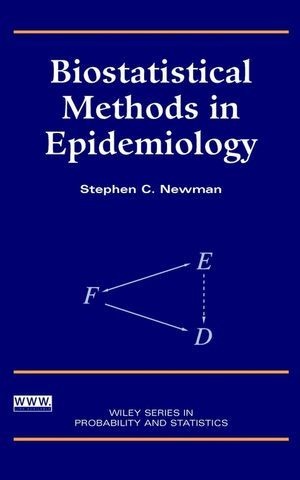Read more
"Statistical Methods in Epidemiological Research" - Dieser Band beschäftigt sich mit den Konzepten, Methoden und Anwendungen der allgemeinen Biostatistik für Epidemiologen. Er konzentriert sich auf die Analyse der beiden Haupttypen epidemiologischer Studien: die Kohorten- und die Fallstudie. Autor Stephen Newman erläutert hier die wichtigsten biostatistischen Methoden und vermittelt damit das erforderliche Grundlagenwissen für die Analyse komplexer epidemiologischer Daten in der Praxis. Die jeweiligen statistischen Verfahren werden anhand von Rechenbeispielen zu aktuellen Daten anschaulich und praxisorientiert erläutert. Mit umfangreichem statistischem Hintergrundmaterial.
List of contents
Introduction.
Measurement Issues in Epidemiology.
Binomial Methods for Single Sample Closed Cohort Data.
Odds Ratio Methods for Unstratified Closed Cohort Data.
Odds Ratio Methods for Stratified Closed Cohort Data.
Risk Ratio Methods for Closed Cohort Data.
Risk Difference Methods for Closed Cohort Data.
Survival Analysis.
Kaplan-Meier and Actuarial Methods for Censored Survival Data.
Poisson Methods for Censored Survival Data.
Odds Ratio Methods for Case-Control Data.
Standardized Rates and Age-Period-Cohort Analysis.
Life Tables.
Sample Size and Power.
Logistic Regression and Cox Regression.
Appendix A: Odds Ratio Inequality.
Appendix B: Maximum Likelihood Theory.
Appendix C: Hypergeometric and Conditional Poisson Distributions.
Appendix D: Quadratic Equation for the Odds Ratio.
Appendix E: Matrix Identities and Inequalities.
Appendix F: Survival Analysis and Life Tables.
Appendix G: Confounding in Open Cohort and Case-Control Studies.
Appendix H: Odds Ratio Estimate in a Matched Case-Control Study.
References.
Index.
About the author
STEPHEN C. NEWMAN, MD, MSc, is Professor of Psychiatry at the University of Alberta, Canada.§
Summary
An introduction to classical biostatistical methods in epidemiology, this text provides an introduction to a range of methods used to analyze epidemiologic data, with a focus on nonregression techniques. It also includes a discussion of measurement issues in epidemiology, especially confounding, with an overview of logistic and Cox regression.
Additional text
"Introduces methods used to analyze epidemiologic data, with a focus on non-regression techniques." (SciTech Book News, Vol. 25, No. 4, December 2001)
"This book has much to recommend it...a useful resource on basic techniques and a supplement to other texts for an intermediate-level audience." (Epidemiology, Vol. 13, No. 3, May 2002)
Report
"...besides being a reference book (it)...includes an interesting reading matter..." (Statistics in Medicine, Vol.23, No.23, 15th December 2004)
"Introduces methods used to analyze epidemiologic data, with a focus on non-regression techniques." (SciTech Book News, Vol. 25, No. 4, December 2001)
"...well suited as an introductory text.... I also recommend this book to practitioners...students, health professionals and epidemiologists...all these groups will find it useful." (Statistical Methods in Medical Research, Vol. 11, No. 1, 2002)
"This book has much to recommend it...a useful resource on basic techniques and a supplement to other texts for an intermediate-level audience." (Epidemiology, Vol. 13, No. 3, May 2002)
"offers a very thorough presentation....profuse and excellent illustrations." (Technometrics, Vol. 44, No. 3, August 2002)
"...both a pleasure to read and an excellent reference...researchers and students alike will benefit from having this book on their shelves..." (Journal of the American Statistical Association, March 2003)

